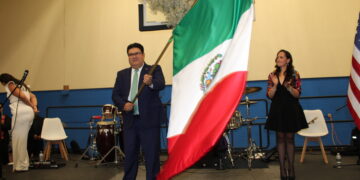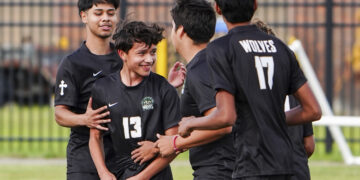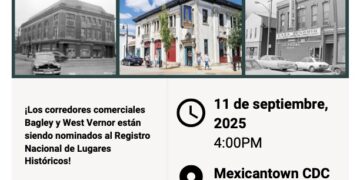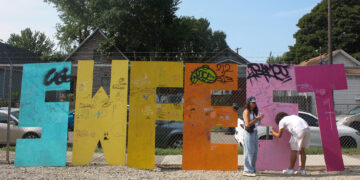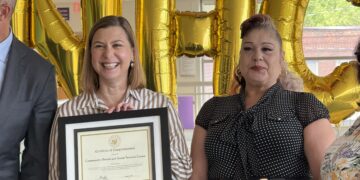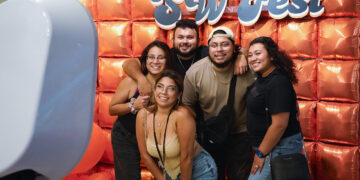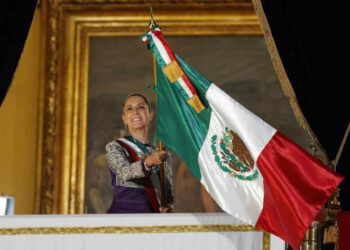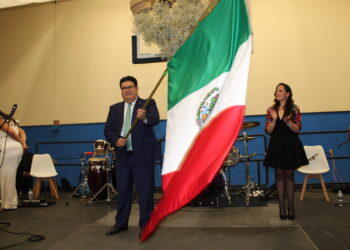Artists’ masterpieces, including those of Diego Rivera, Charles McGee, and even Rembrandt, surrounded by the marble columns and historical masterpieces of the Detroit Institute of Arts, drew dozens of Wayne County educators together on June 26 for a professional development experience unlike any other as educators were armed not with lesson plans or grading rubrics but with an open mindset rooted in art.
These teachers engaged in a day of learning centered on “computational thinking”, a concept creatively coined by the Wayne Regional Educational Service Agency (RESA) as “CT in the D,” a unique program that integrates art into classrooms across all subject areas.
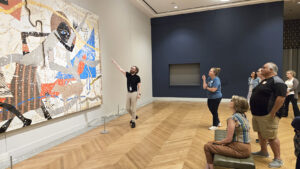
The event, now in its second year, is a partnership with Wayne RESA, the Michigan Department of Education, and the national nonprofit Project Tomorrow. It offers K–12 teachers hands-on opportunities to deepen their understanding of computational thinking (CT), a problem-solving approach that includes decomposition, pattern recognition, algorithmic design, and abstraction.
Katie Marchionna, Computational Thinking Project Manager for Project Tomorrow, emphasized the importance of incorporating art into the classroom, as well as providing educators with diverse art experiences.
“We’re looking at computational thinking, which is just another way to approach problems and we’ve been doing this work in Michigan for about the past six years.”
“But about a year ago, the state passed a new law to grant money for districts to get some professional development to their teachers on concepts like this,” Marchionna added.
Computational thinking has gained national attention as an essential 21st-century skill in all areas of education. In Michigan, the Department of Education has encouraged districts to adopt interdisciplinary approaches that help students develop CT skills early and often. Programs like “CT in the D” are a direct response to that call.
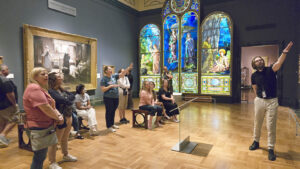
Project Tomorrow has been instrumental in shaping national frameworks for computational thinking and has worked closely with Michigan educators to pilot programs that are inclusive, student-centered, and scalable.
Rather than hosting the workshop in a traditional conference room or school auditorium, organizers chose the DIA as both a backdrop and a teaching tool. During the daylong session, educators participated in guided exercises throughout the museum, using CT strategies to interpret artwork and develop lessons they could bring back to their own classrooms.
In one gallery, a group of educators took the time to study Charles McGee’s Noah’s Ark: Genesis 1984. With perplexed looks on their faces and questions swirling as they interpret what they are looking at.
Tyler Taylor, Associate Educator at Detroit Institute of Arts, encouraged teachers to express what they are seeing.
“I’ve noticed a lot of triangles and angles and fingers…,” one teacher said.

“Triangle-shaped hair and it makes me wonder what the symbolism of that is,” another teacher said.
Taylor continued to guide the room of educators through their feelings and interpretations, discussing how to map out a lesson plan that would help students create their own visual interpretations of change.
One of the unique aspects of “CT in the D” is its ability to bring together educators from across Wayne County, fostering collaboration among urban, suburban, and rural school districts. Participants hailed from places like Romulus, Livonia, Redford, Detroit, and Wyandotte.
Throughout the day, teachers shared lesson ideas, co-designed classroom activities, and reflected on how CT could help close learning gaps, particularly for students underrepresented in STEM fields.
Leila Abuhabma is the Lead Teacher at Crestwood Early Childhood Center and highlights that children at the preschool age are like little sponges but also fertile ground for creativity and learning, and programs like this are an amazing source.
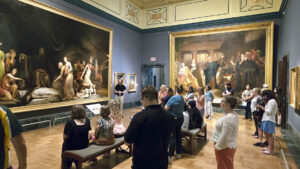
“Having low-income programs where families bond together. It’s amazing. Programs like this show there is hope for these families,” Abuhabma said.
“There is no excuse of oh, you can’t, no, there’s an opportunity you can we’re able, let’s do it. So this is why we’re here today, and we’re just trying to connect our schools to the outside community.”
In one breakout session, educators explored how to use CT to guide students through current events, helping them break down complex issues like climate change or social justice movements into manageable concepts that support deeper understanding and civic engagement.
Wayne RESA plans to expand the CT initiative next year with more localized training, digital tools, and continued partnerships with institutions like the DIA. Leaders say the goal is to make CT a foundational part of learning in Wayne County, not a one-off enrichment but a framework embedded in how students and teachers approach every subject.
Laura Gabrion, Literacy Consultant at Wayne RESA, says that connecting K-12 students through art and equipping teachers with artistic tools for students to take back to the classroom is a priority, but doing it at the Detroit Institute of Arts is one of the best places to have this lesson.
“Visual thinking strategies, connecting it to computational thinking through art, which then opens the doors for other content areas for educators,” Garbion said.
“And in true transparency, the DIA is a nice book; really, you’re not looking at just the artwork, but also the architecture of the building itself.”
This article and photos were made possible thanks to a generous grant to EL CENTRAL Hispanic News by Press Forward, the national movement to strengthen communities by reinvigorating local news. Learn more at www.pressforward.news.

